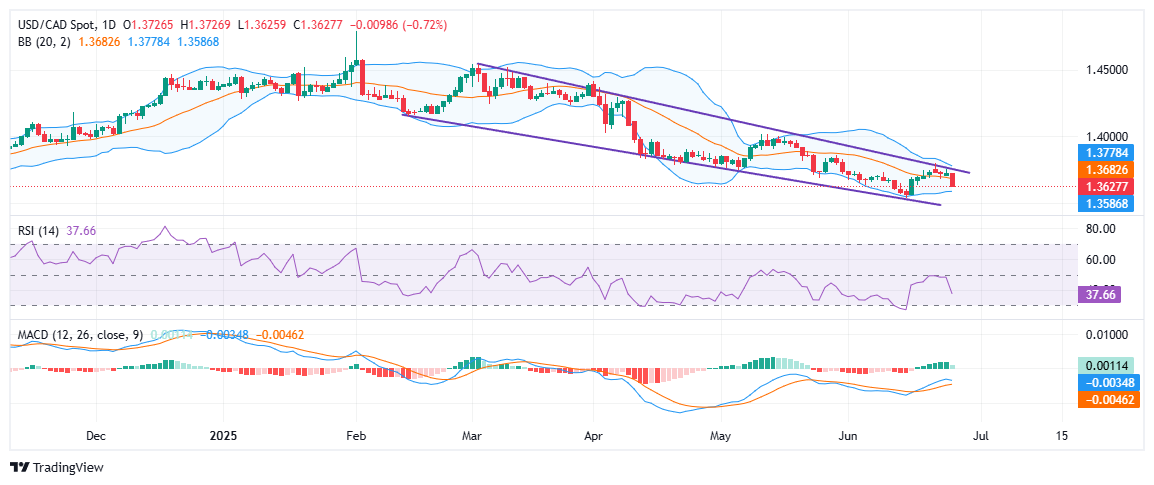
- The Canadian Dollar Strengthens Slightly Amid US Dollar’s Decline Due to Political Pressures on the Fed.
- USD/CAD Positioned at 1.3630, Dropping 0.70%, Continues in a Downward Trend.
- Bearish Market Outlook for USD/CAD with Key Support at 1.3587, According to Technical Analysis.
The Canadian Dollar (CAD) has experienced a modest increase against the US Dollar (USD) this Thursday, as the USD faces downward pressure following critical remarks about Federal Reserve Chair Jerome Powell by US President Donald Trump. These comments have sparked concerns about political influence on the Fed’s policies, undermining confidence in its autonomy and indirectly benefiting the Canadian Dollar.
Currently, the USD/CAD pair is witnessing a decline, trading around 1.3631, a decrease of 0.70% for the day. Throughout the week, the pair has shown minimal directional movement, with the Canadian Dollar struggling to gain momentum against a backdrop of falling oil prices and reduced geopolitical tensions, which have dampened the commodity-driven Canadian economy despite the general weakness of the US Dollar.
The US Dollar Index (DXY), which measures the strength of the USD against a basket of six major currencies, is now near 97.22, marking its lowest point in nearly three years. The mixed economic indicators from the US further contribute to a cautious market sentiment. While there was an increase in Durable Goods orders in May, showing some resilience in manufacturing, the overall US economy saw a contraction of 0.5% in the first quarter of 2025, more severe than the initial 0.2% estimation, indicating persistent economic challenges. Additionally, US Initial Jobless Claims decreased by 9,000 to 236,000 for the week ending June 21, below expectations but still higher than the annual average, suggesting a slowdown in labor market momentum.

From a technical standpoint, the USD/CAD pair remains within a clear descending channel, confirming the bearish trend with recent rejections near the upper channel boundary. The pair is trading close to 1.3630 after failing to surpass the trendline resistance from the highs of March and May.
The Bollinger Bands are narrowing, suggesting a potential significant market move soon, with immediate technical support around the lower band at 1.3587. A break below this level could lead to a test of the 1.3500 psychological threshold, whereas a sustained rise above 1.3680 is necessary to challenge the 1.3778 resistance level and the upper channel limit.
Momentum indicators like the Relative Strength Index (RSI) and the Moving Average Convergence Divergence (MACD) show a cautious market. The RSI is around 38, indicating that bearish momentum dominates. The MACD histogram is hinting at a potential bullish crossover, but it remains unconfirmed. For a bullish reversal, a decisive break above the descending channel is crucial; otherwise, the bearish trend is likely to continue.











Leave a Comment